|
We headed
up last weekend to the Highline Trail locality once again to
collect some microfossil material. Unfortunately, the night before
it snowed up there making finding anything at all very challenging!
I came back with about 35 pounds in limestone, however it was
not chosen based on fossil content so much as being able to find
a clear spot to collect in the snow bound trail. Still, the first
teaspoons of material are coming out of the acid bath, and some
of it was translucent silica. Here are few specimens from that
batch that had some light transmission to try out with the new
microscope.
 |
One
type of ostracode is preserved as a half shell, and while less
common than the oval varieties, it has good surface ornamentation.
Back lit shots like this at 60x shows just how much light does
get through. About three were found in the first teapspoon of
acid fines material. |
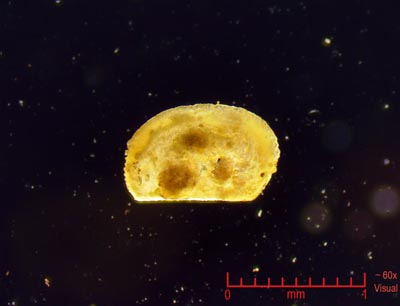 |
Dark
field illumination, same specimen. Darker areas are where the
ornamentation appears as bumps on the basic shell surface. The
sharp line at the bottom is the hinge. Ostracodes were small
shrimp like arthropods and are still around today. |
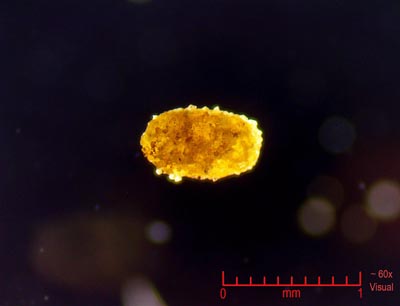 |
The
second type of Ostracode we find are the basic ovals. Both shell
halves are still connected here forming a solid ellipse of material.
However dark field illumination shows a stunning straw coloration. |
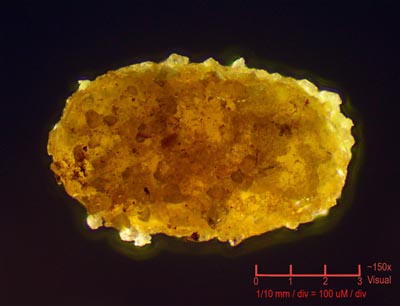 |
For
some real detail, we go up to 150x. Dark field illumination highlights
the crystals around the edges well. This one is filled solid
internally, I have found in this batch one that is a half shell. |
 |
At
150x, bright field illumination (backlit) shows the internal
density of the silica. A flattened lip is seen here at the top,
and the hinge is at the bottom. |
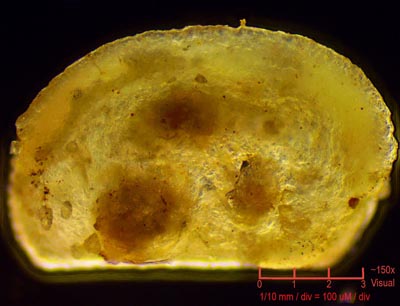 |
For
the internal crystal details, nothing works better than dark
field. Essentially, the more transparent the silica, the brighter
it appears with this illumination. This differs from back lit
which shows the thickness better. |
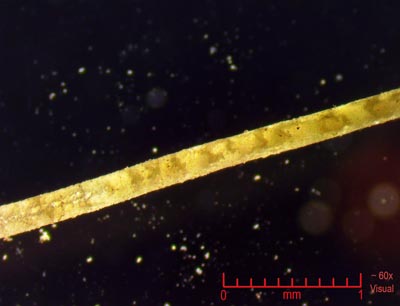 |
This
is a spine from a productid brachiopod. You can see even dark
field that the repeating dark patterns along the length of the
spine are spurts of growth. |
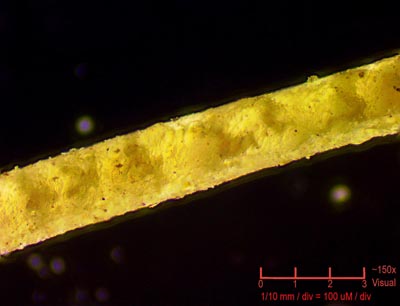 |
150x
darkfield shows the repeating paterns better. Darker means slower
growth with higher density and lighter is fast. This correlates
most likely with either tides, or perhaps daily cycles. |
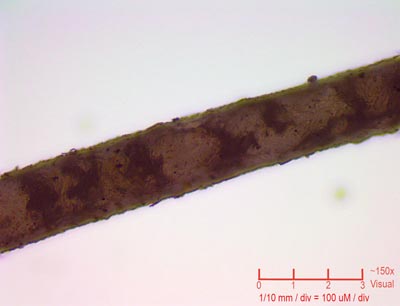 |
For
the best view of the growth lines, back lit (Brightfield illumination)
shows it best. While not as asthetically appealing as dark field,
the growth patterns are much better highlighted. |
 |
Found
in the first batch were dozens of red sand grains. But was the
quartz actually red, or something else? We can see from this
dark field close up that the red coloration is caused by red
translucent iron or manganese stains on the clear quartz crystal.
60x. |
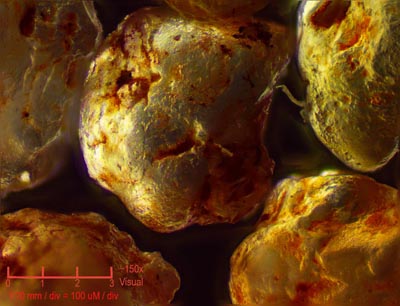 |
Close
up at 150x, dark field. The red stain can be seen to not only
coat the grains, but fill in any recesses. The grains are well
rounded and certainly have traveled far from thier source on
the coast. Wind borne sand storms would be common during the
Permian times, with the nearby Sahara type deserts lining the
shore. The red Schnebly Hill Sandstone is the main terrestrial
bed for the sand deposits. |
|
